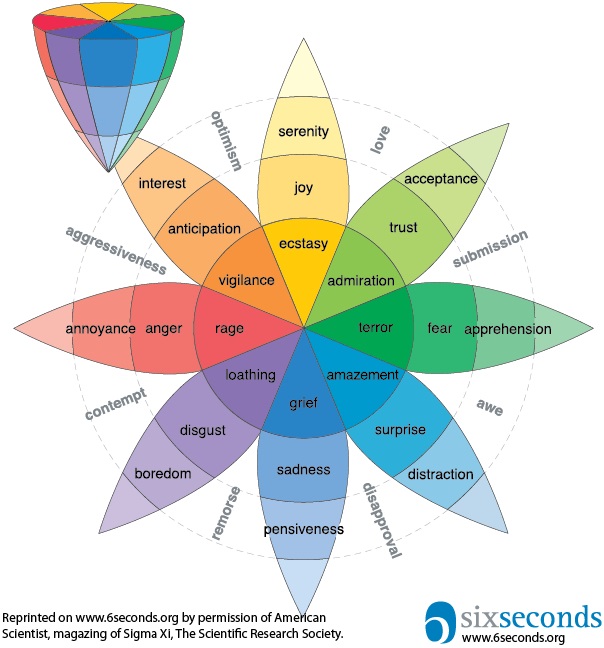 A Coaching Power Tool Created by Stephenson Robert
A Coaching Power Tool Created by Stephenson Robert
(Transformational Coach, UNITED KINGDOM)
Introduction
As a coach, who works with the narrative elements of the client, not the story that we can get caught up in, but more the Narrative of their current existence in relationship to the goal or challenge. I am keen to explore who they are “being” at the moment, that enables the challenge to exist in the first place, or the narrative they are holding onto that prevents them from taking the next step without the coaching intervention.
During the opening of many coaching sessions, we can notice the blocks, limiting beliefs, or perceived truths that allow fear to come into the client space.
When I talk about fear here, I am not talking about fear in relationship to real danger, fear of falling, fear of doing a dangerous sport. However, these fears may play apart in the coaching, often as metaphors for a more internal fear that my tool seeks to shift to create or rather enable action.
As coaches, we are fully aware that it is the client that takes the step, and the coaching is the space that enables the step to be noticed, realized, gathered up by the client through the process.
Explanation
Noticing fear.
One of the first steps is to notice fear showing up in the first place, and this might come from the client’s tone, energy, or physicality when talking about the goal or challenge. As we hold this in mind, it is essential to be mindful of applying our own agenda of fear being present, into the coaching space. Instead, we hold this lightly as a possibility, the same way we might look out for words like “should” and “must” as these are linguistic gateways into a client’s thoughts or feelings.
The tone of fear.
When working with Bobby on his desire to be a public speaker, one was able to notice the strong and confident tone of voice that flowed during the coaching conversation unless Bobby was exploring how he might handle questions from the audience that he didn’t know the answer to. There was a pulling back of the volume, a drop in tone. The was also accompanied by words such as “can’t”, “stuck” and “confusing”.
By paying attention to the client tone and in fact language we might notice the “fear” making itself known but not necessarily in the clients conscious, but under the surface, which makes it important for the coach not to jump on the first noticing of tonal change as meaning fear, but reflecting the noticing of tonal shift with inquiry and openness—being very aware of continuing to hold rapport and presence with the client. A too forceful question may break rapport, cause the client to close up, or move away from the current felt state to relieve themselves from the coach’s path of questioning.
Observing fear.
When we can see our clients, we might also notice a physical reaction take place as fear becomes part of the conversation. We often talk of leaning into a challenge or leaning into space and can notice this happening physically as someone becomes more engaged in the conversation.
However, when something pulls fear or anxiety into space, our clients may lean back, pulling away from the space, creating distance for themselves, retreating, or even getting smaller in front of our very eyes. However, these movements can be extremely subtle, and having trained as a mime artist in a past career; my eyes are tuned into physical detail, noticing the smallest of gestures.
There is something else to be said here, too about noticing the client’s physicality. If we look, with focus, at the client’s face, we will miss the rest of the client and not see other physical signs showing themselves for noticing.
When working with Bobby, as he got closer to his stuckness, there was a curling of the shoulders, a slight turning inwards and forwards. There was also a tilting of the head. All of this can be easily missed when working with the client when we become too focused upon one aspect, so the ability to be present while also not attached to any-one element is so important.
The energy of fear.
When we take the time to breathe, relax, and tune into the space between ourselves and our clients, we can often notice the energy between us. Sometimes we are not even aware of it until it changes or shifts. This is similar to walking into a room and noticing the tension in the space, or when a person of high positive energy walks into the room, and we feel that lift in energy.
Depending upon your belief or paradigm, you may be more tuned into energy than others, and that is just fine, because as coaches we can still, regardless of our belief, notice the shift in energy, rapport, or attention between our client and ourselves during the session. Similar to the emotion we notice, just before it is physically displayed, by the client.
We might think about it from a spacial perspective; there is the client in their space, us in ours and the space of the coaching relationship, and it is the caching relationship space we can notice shifting and changing as fear enters into it from the client. Sometimes we might notice this as our own fear but are unsure where this sensation is coming from, and we might just take the time to explore is this me, or is this in the space. You may even ask the client this as an open question, or a reflection of what you are noticing.
So far, I have spoken about my own observations of fear, and I feel it is essential to share a few other perspectives:
The dictionary talks about; an unpleasant emotion caused by the threat of danger, pain, or harm. And while there may be no real physical danger for the client, they are often battling with the emotional aspect of fear, the felt sense as opposed to the physical threat of danger.
Verywellmind1* talks of fear as being; a natural, powerful, and primitive human emotion. It involves a universal biochemical response as well as a high individual emotional response. This can allow us to know that this is a very human experience and that our clients are not odd, wrong, or broken to experience the emotions, it is simply a human reaction.
They continue to say; Fear is a natural emotion and a survival mechanism. When we confront a perceived threat, our bodies respond in specific ways. Physical reactions to fear to include sweating, increased heart rate, and high adrenaline levels that make us extremely alert2*. This reinforces the idea that this is simply being human. However, as coaches, we work with our clients to explore the “realness” of the perceived danger which is where the Action part of the power tool comes into play, which we will explore in more detail later.
In her book Positivity, Barbara Fredrickson says; fear is linked with the urge to flee….3*
This may give us evidence, to notice why clients avoid leaning into what they fear, when exploring their goals or challenges, within a coaching session.
Paul McGee also talks about fear, and how it can cause us to exaggerate our perception of danger, in his book Self-Confidence he says; ….feeling anxious is not the problem. The problem occurs when you allow the anxiety to overwhelm you…..being over-anxious causes you to exaggerate the negative impact of an event or the likelihood of that event occurring.4*
Application
So how might we put this knowledge into action? Here I outline the steps one might take, Using my client Johnny (name changed to protect the innocent: permission gained to use our sessions as examples) to highlight both the noticing of fear and the process that enables us to move from fear to action.
Johnny had several public speaking engagements lined up, the initial excitement had shifted, leaving Johny with a very temperament at the beginning of the session. Initial observations;
An additional observation is a story being shared, the use of language such as;
One can notice how this language isn’t about the self but for others. In some way, we can notice how Johnny is giving away his “power” in the situation, leaving a sense of powerlessness.
First step – Reflection
Here we reflect our noticings as the coach, without judgment or meaning, just what we are seeing and hearing—making sure to use as much of the client’s language as possible. This creates an observable perspective for the client to make their own reflections and noticings.
Second step – Questioning
Here we use our open questioning skills to explore what “might” be going on for the client. Keeping what I like to call “fluid language”. Words such as might, have an unusual quality of fluidity about them, not fixed. And that allows for changes, expansions, and emergence to take place for the client, without them being wrong or having to change their minds, just allowing the newness to exist and it emerges into space.
The third step – Eliciting emotion
This is the most delicate step of all, where one must be mindful of putting our own agenda or feeling onto the client. Firstly we ask the client.
The client may share a myriad of emotions here, and you might even need to help the client name the emotion they are feeling using tools like the ‘emotion wheel’5*

One can also use Plutchik’s Wheel of Emotion

As we view these tools, we can see the emotions linked to or associated with fear. It is not for us to diagnose the client as having fear, but to explore if this is a possibility, which leads to step four
Fourth – the challenge
Whenever we, as coaches, name what we feel as being in the space or a possibility, it is important to do so in a way that it is a question not a statement of fact.
One might even ask for permission to share this reflection; however, this permission might have already been gain within your original coaching contract. You may wish to recontract at this moment or not, but one must make sure that we continue to hold the space for the client, as well as coaching presence and rapport.
When working with Johnny, with who I have had a daily long coaching relationship, I can simply ask the question, without seeking additional permission, using language that is open, reflective, and a holding supportive tone.
“Johnny, as I hear you share and we explore I am wondering if fear might be playing a part here….What are your thoughts on that?
Having worked with Johnny for a while, we have explored the idea of fear before, so this word is familiar, you may wish to wait until the client brings the word into space, for concern of leading or bringing the coaches agenda into space. However, I feel when done right, the client can reject your wonderings easily if there is no resonance. And the coach must allow this rejection to take place without attachment.
Fifth step – the consequences
Once you have elicited the emotions, as it may not be fear that is holding the client back or keeping them stuck, we can then explore the consequence of staying in this space.
I am aware that in each of our coaching spaces, there may be other routes that may come to mind or be more useful, as it is with all coaching processes. However, to share how I enable movement, I will assume that the client is stuck, held back, or inactive in progression at this time.
We can call on the consequences questions, which we can also use with visualization if our client desires.
This visualization journey allows the client to picture what may continue to happen if they stay where they are right now. This often brings about a desire to move forward, to take action, to create change, especially as the client may see how being inactive/passive/settling, how they will not be able to achieve the goals that they desire. This shift in perspective brings about a desire to take action, which we can then continue to coach the client for them to build the steps of action.
Reflections
While working with my client’s I am mindful not to allow this tool to drive my coaching, but to sit in the background, brought into space when the vocal and physical indicators show up in the space, and even then not to push but allow. It is all too easy for a tool to become leading, and it is our offering into the space that allows us to bring it with openness and gentle offering, that allows it to be accepted or rejected without tension or a breaking of the coaching relationship.
I also feel that it take a sense of connection and courage to bring this tool into the coaching relationship, challenging the client to explore their fear without having developed a relationship with them, can lead to damaging the coaching relationship in a way that is unrepairable. However, one needs the courage to challenge our clients, challenge them to look deeper, to go further, to take a deep breath and face what is, so that they can address it, except its presence, and make the choice to do something about it when and where appropriate to them.
I hope this tool enables you to assist your client’s movement from Fear to Action, in a supportive, encouraging, and powerful way, leading to the achievement of their goals.
Reference:
1* https://www.verywellmind.com/the-psychology-of-fear-2671696
2* Kozlowska K, Walker P, McLean L, Carrive P. Fear, and the defense cascade: Clinical implications and management.
3* Positivity, Barbara Fredrickson,pg19
4* Self-Confidence, Paul McGee, pg 144